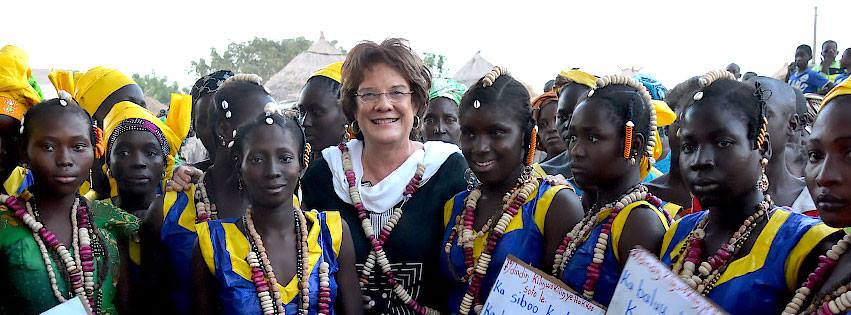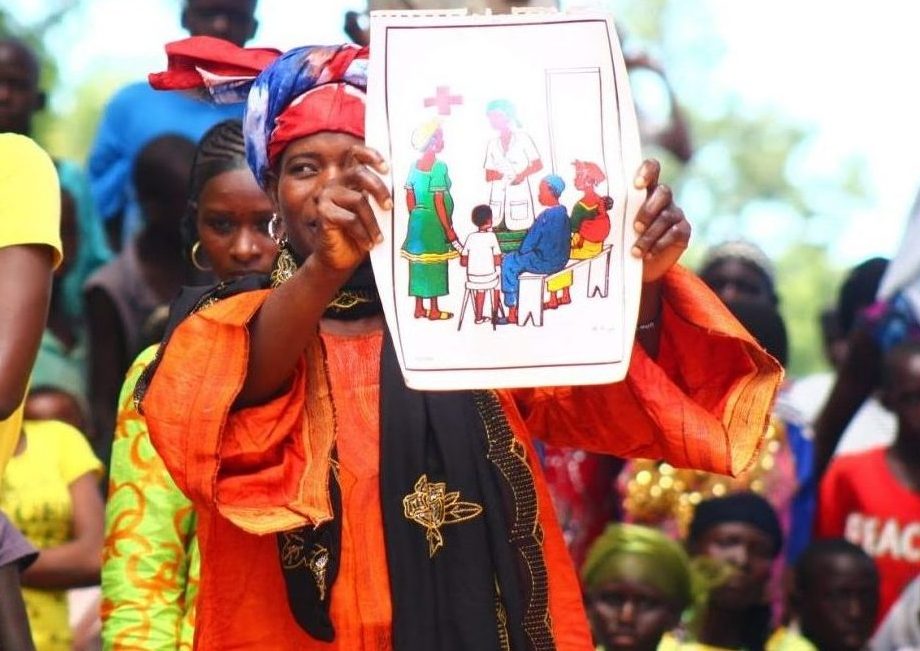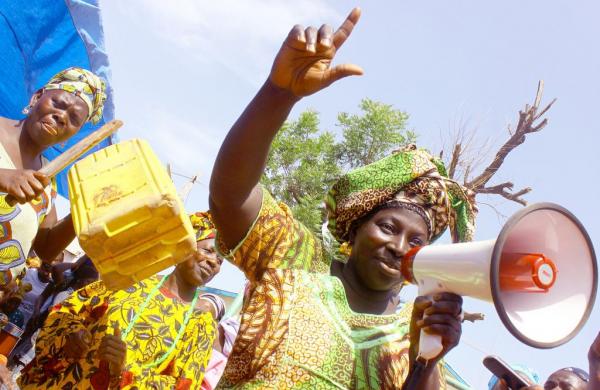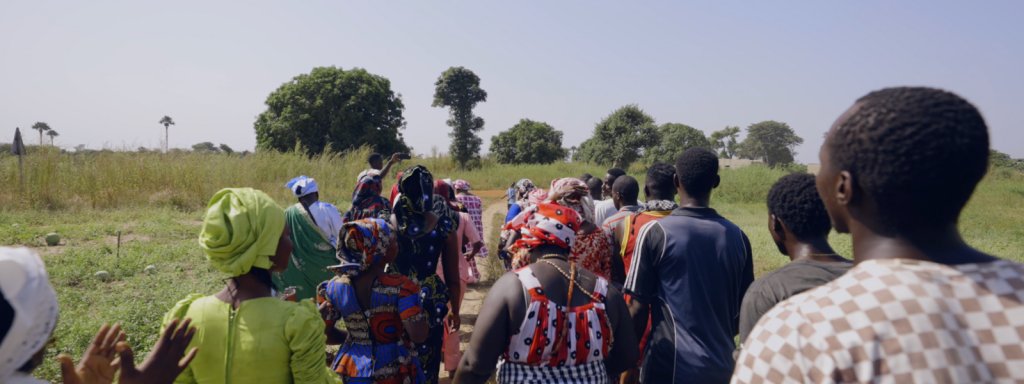In my last post I advocated for nonformal learning programs as a uniquely qualified tool to combat harmful cultural norms like female genital mutilation/cutting (FGM/C), and more broadly, gender equity. Today I bring you just such a program: Tostan, founded in Senegal and now also operating in The Gambia, Guinea, Guinea Bissau, and Mali.

Established as an NGO in 1991, Tostan was not created to end FGM/C. Rather, founder, Molly Melching, under the mentorship of famed Senegalese scholar Dr. Cheik Anta Diop, envisioned it as a nonformal literacy program, operating in local languages. At a time when formal education in Senegal was offered only in French, this set Tostan apart. Melching recognized and embraced the importance of meeting people where they were, both linguistically and culturally. By 1995, a curriculum transformation was underway. The Tostan team, in working closely with participants, had discovered that learner-introduced questions on democracy and human rights were creating what Paolo Freire called, “generative themes”. A generative theme being one that unlocks for critical examination that which has previously been assumed to be “natural”, or “unchangeable”, to begin the work of separating that which is nature from that which is human construct.
Because the Tostan facilitators were receiving similar questions across multiple locations, they adapted their modules to include interactive explorations of democracy, human rights, and health early in the first year of learning. This adaptive, learner-led approach to creating curriculum is a central characteristic of nonformal learning programs, and why Tostan has proven so powerful.
In my interview with Diane Gillespie, Ph.D. in Cultural and Psychological Studies in Education and long-time qualitative analyst for Tostan, she described the critical component of nonformal learning programs like Tostan as their ability to awaken the capacity to aspire. She explained that Dr. Arjun Appadurai reasoned that development had failed in many ways because the resource poor were not given the opportunity to meaningfully aspire to the future, they lacked the navigational skills, not the intelligence. Which is why Tostan’s first step for learners is a visioning exercise. Learners draw and verbally describe their vision for their community, how they would like it to be.

This is followed by an exploration of their place in relation to others, as an individual, a community, within the nation, and finally the world. And within this conversation a very important moment arises: learners begin to identify the roles they each play. Gillespie describes how “the women come up and say ‘I sweep the room, or cook millet….and the man is a religious teacher’” and this is where “the light comes in, where ‘those were learned roles’” comes into focus” for the first time. And in this moment, the recognition of what is man-made versus what is natural starts to take hold, the process of loosening the grip of cultural norms begins.
Learners then revisit the visioning exercise, in which they pictured a vibrant healthy community. They are now able to recognize that in order to reach that goal, people will need to take on different roles, and because the roles are human constructs, the roles can indeed be changed. This is where transformation of consciousness emerges.
The next step is understanding how to analyze a problem and address it effectively. Because FGM/C is tied to marriage customs, it is not enough that one family or one village decides to stop cutting their girls. The intermarrying groups must accept brides who are not cut. And so the work of advocating and organizing for change becomes the next phase for the learners, action.
This is one of many areas where other organizations stumble. What enabled Tostan to move forward was the value system Melching had adopted at the outset, a philosophical standard for nonformal approaches. Tostan demonstrated respect for the people by teaching in their language and with sensitivity to and inclusiveness of their culture and customs. They did not arrive trying to teach people French, telling them what they needed. For this reason, many elders respected their approach, and trusted the intentions of the organization. One such elder was Imam Diawara, whose advocacy in 1998 on behalf of ending FGM/C resulted in his village and their intermarrying villages to publicly pledge their abandonment of FGM/C, 13 villages in all. The journey of creating their newly envisioned future was underway.

By 2008, a USAID evaluation of Tostan’s work found that “a striking change” could be seen in the villages. Tostan undoubtedly empowered communities to action. The villages had not only remained united in their abandonment of FGM/C, but even more powerfully, they now viewed this previously deeply imbedded practice as obsolete. A second evaluation performed by UNICEF in the same year found that, in villages which had been working with Tostan, a mere 30% of girls had been cut. In stark contrast, 69% of girls in similar villages which had not participated in the Tostan program had been cut. Further, as of 2021, 5,700,000 people from 9,517 communities had publicly declared an end to FGM/C. This does not mean that every individual has abandoned the practice, as the UNICEF report demonstrates, but it can be said that every participant has now been able to critically examine their beliefs and make informed decisions for their well being and that of their children.
It is important to remember that the original Tostan literacy program did not generate, nor seek to generate, these large, mobilized efforts. Rather, action arose out of communities who asked their facilitators to help them investigate democracy, human rights, and health. Through the synergy created by this examination and exploration, they self-mobilized. It was the adaptive nature of nonformal learning programs that enabled this shift in curriculum. And through the trust earned by grounding the program in local language and culture, another cornerstone of nonformal learning, Tostan created a space that felt safe for learners to interrogate their beliefs. It is through this nonformal framework that communities are emerging, one step closer to gender equity on a long and arduous path.


